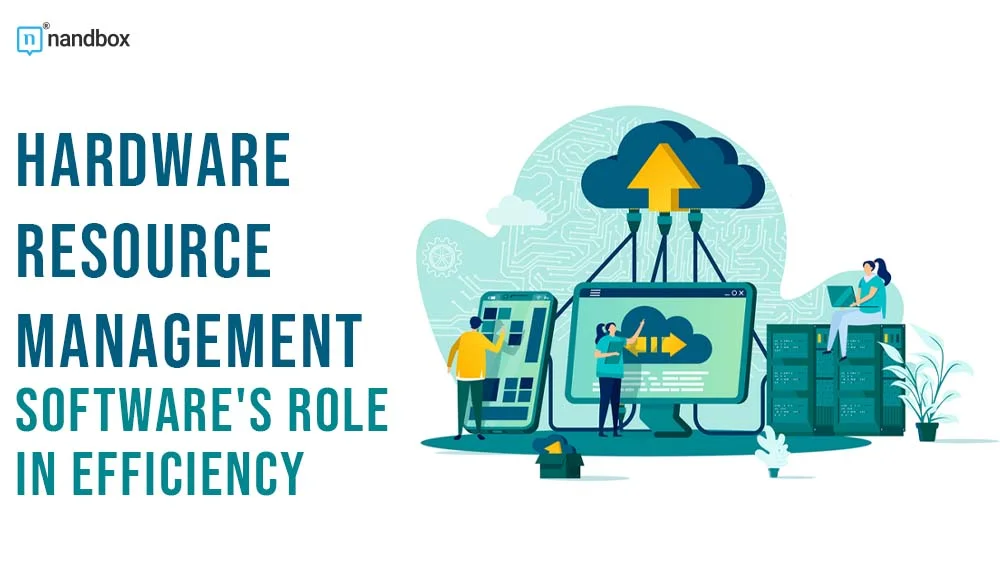Software and hardware combine to give flawless technology experiences in our daily activities. Whereas the equipment hardware provides the physical capabilities to compute, it is the software that organizes these resources into functionality, efficiency, and performance. Hardware resource management through software is critical to optimizing operations, reducing costs, and improving the performance of a system as a whole.
Function Combinations
Effective management of hardware resources will require the integration of many functions that are under the control of software. This integration ensures that the load on hardware components like CPUs, memory, storage, network interfaces, and even computer monitors remains optimal, avoiding bottlenecks and maximizing throughput.
Operating Systems and Resource Allocation
Operating systems are important in managing hardware resources. They allocate time slices of the CPU, slices of memory space, and I/O operations to different applications. Each of these ensures that the allocation of any process has the resources necessary, without causing a conflict with any other process. Advanced operating systems use sophisticated algorithms to balance the load and prevent conflicts among resources, minimizing the risk of system crashes.
The need for specialized software jumps exponentially in a commercial environment, especially in infrastructure-heavy settings of a nature that is usually handled by commercial low-voltage contractors. These contractors would need to rely on advanced resource management software to manage wide-ranging networks of low-voltage systems. This is to ensure that everything keeps running smoothly and efficiently without interruptions, from lighting controls to security systems.
Virtualization and Resource Optimization
Virtually, the technology runs several virtual machines on a single physical server, hence optimizing the hardware usage. Software controls these machines, normally hypervisors, distributing the available hardware resources to the VMs dynamically, depending on demand. This offers not only improved resource utilization but flexibility and reduction in cost through the elimination of extra physical hardware as well.
Automation and Monitoring Tools
The most important role of automation tools is effective hardware resource management. They automate some of the repetitive tasks, optimize the process, and provide real-time monitoring and analysis. By continuously assessing the performance of your hardware and usage of resources, they are capable of pinpointing inefficiencies and possible problems before they develop into critical situations.
Software’s Impact on CPU and Memory Management
The bottom line in system performance in all computing systems is efficient CPU and memory resource management. Resource management software keeps applications running smoothly and efficiently and thus improves user experience and productivity.
CPU Scheduling and Load Balancing
These algorithms of CPU scheduling and load balancing in software distribute the processing tasks between the available CPU cores. No single core will be loaded with tasks while other cores sit idle. Therefore, achieving better performance and quicker execution of tasks.
Memory Management Techniques
Memory management software controls how memory is allocated, used, and freed. Several different techniques, like paging, segmentation, and caching, can efficiently manage the deployment of memory, preventing any latent conditions that might impact overall access speeds. Good memory management does much to forestall problems like memory leaks and fragmentation, which degrade the performance of any system with time.
Real-Time Processing And Low-Latency
In systems where real-time processing and low latency are important—for example, in gaming or financial trading systems—specialized software manages hardware resources to support stringent, high-performance requirements of applications. The system is running any critical tasks in the foreground and managing resources dynamically to ensure high performance and responsiveness.
Storage and Data Management
The huge volumes of data processed and produced by modern systems necessitate efficient ways of storing and managing them. Software solutions in storage management guarantee the integrity, availability, and performance of data.
File Systems and Data Access
File systems are used for organizing and managing the storage of data, as well as the retrieval of the same data from a storage device. Improved file systems include journaling, enhanced integrity features on data, and distributed file systems that enhance the speed of access and redundancy. They use good file system management software for optimum performance and reliability of storage resources.
Database Management Systems
The DBMS manages all the activities regarding storage, retrieval, and update of data in databases. They govern the execution of queries, concurrency of programs, consistency, and security of data. Embedded within the DBMS software is the efficient management of hardware resources, which in turn provides fast and reliable access to huge data sets.
Storage Virtualization
Abstraction of physical devices into flexible and scalable logical units is done for storage virtualization. Virtualization software manages these resources efficiently to utilize the resources effectively. Therefore, storage management becomes easy, and there are prospective cost savings as well as performance enhancements in enterprise environments.
Networking and Connectivity
It refers to managing resources effectively required to perform networking and connectivity such that it supports reliable and efficient communication between different devices and systems.
Network Management Software
Network management software, therefore, regulates and monitors traffic, performance, and security problems related to network operations. The software optimizes the usage of all types of networking equipment and detects bottlenecks, solving them to ensure reliable and secure data transmissions. Efficient network management ensures the availability and high performance of the local area and wide area networks.
Load Balancers and Traffic Shaping
Load balancing across servers or network paths allows for network traffic to be appropriately distributed to prevent a single point of failure and maximize resource utilization. Traffic-shaping software controls the flow of data, thus giving priority to critical traffic and reducing congestion. These instruments are of key importance in handling the complexity and dynamics of modern-day networks.
Quality of Service
QoS tools set the priority of network traffic based on predefined policies. This is to ensure that bandwidth and low latency are delivered to important applications and services. It manages the resources of the network to maintain performance and reliability, especially in mixed-traffic environments.
FAQs
How do software solutions enhance the efficiency of managing hardware resources?
It improves hardware resource management efficiency through optimization of allocation and use of CPU, memory, storage, and networking resources. It uses algorithms and tools to balance load, block bottlenecks, and ensure system stability and performance.
The role of virtualization in the management of hardware resources:
Here virtualization-enabled hardware resource management plays a role: it adds the potential to unleash numerous virtual machines from a solitary physical server. This optimizes hardware use, brings flexibility and scalability, and reduces the need for extra physical hardware.
How can businesses benefit from efficient hardware resource management?
Efficient management of hardware resources enhances performance, trims down costs, and improves the reliability of the system for any business. Resources are utilized at their best potential. This creates no space for downtime and thus serves and facilitates business operations and growth.
Conclusion
Hardware resource management using software is essential to achieving maximal system performance, minimized costs, and increased reliability. From operating systems and virtualization to managing storage and networking, it is used to make sure hardware resources are utilized to the best effect. Businesses can gain improvements in the use of resources and total efficiency. If this most up-to-date set of algorithms and automation tools is coupled with real-time monitoring.
The role of software in resource management is increased manyfold in environments where specialized systems are called for. Like, for instance, those managed by commercial low-voltage contractors. Such commercial contractors depend on sophisticated software solutions to manipulate large low-voltage system networks and maximize the performance of corresponding hardware resources.





